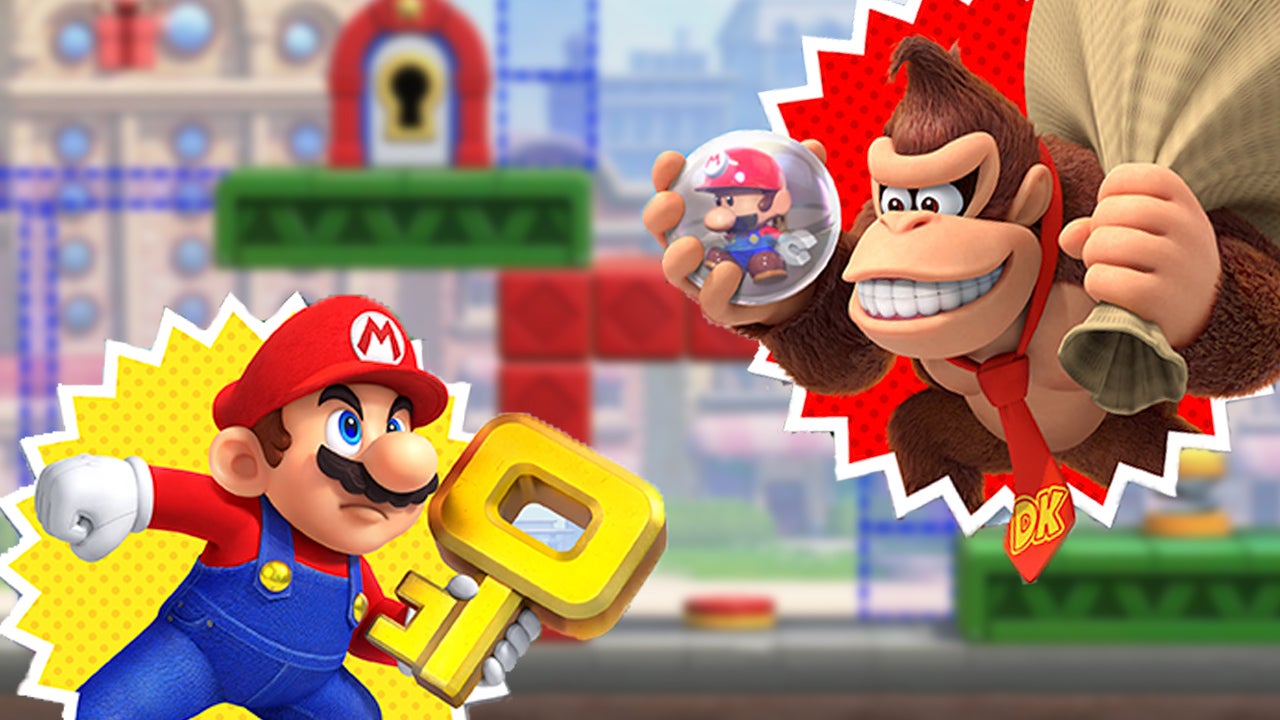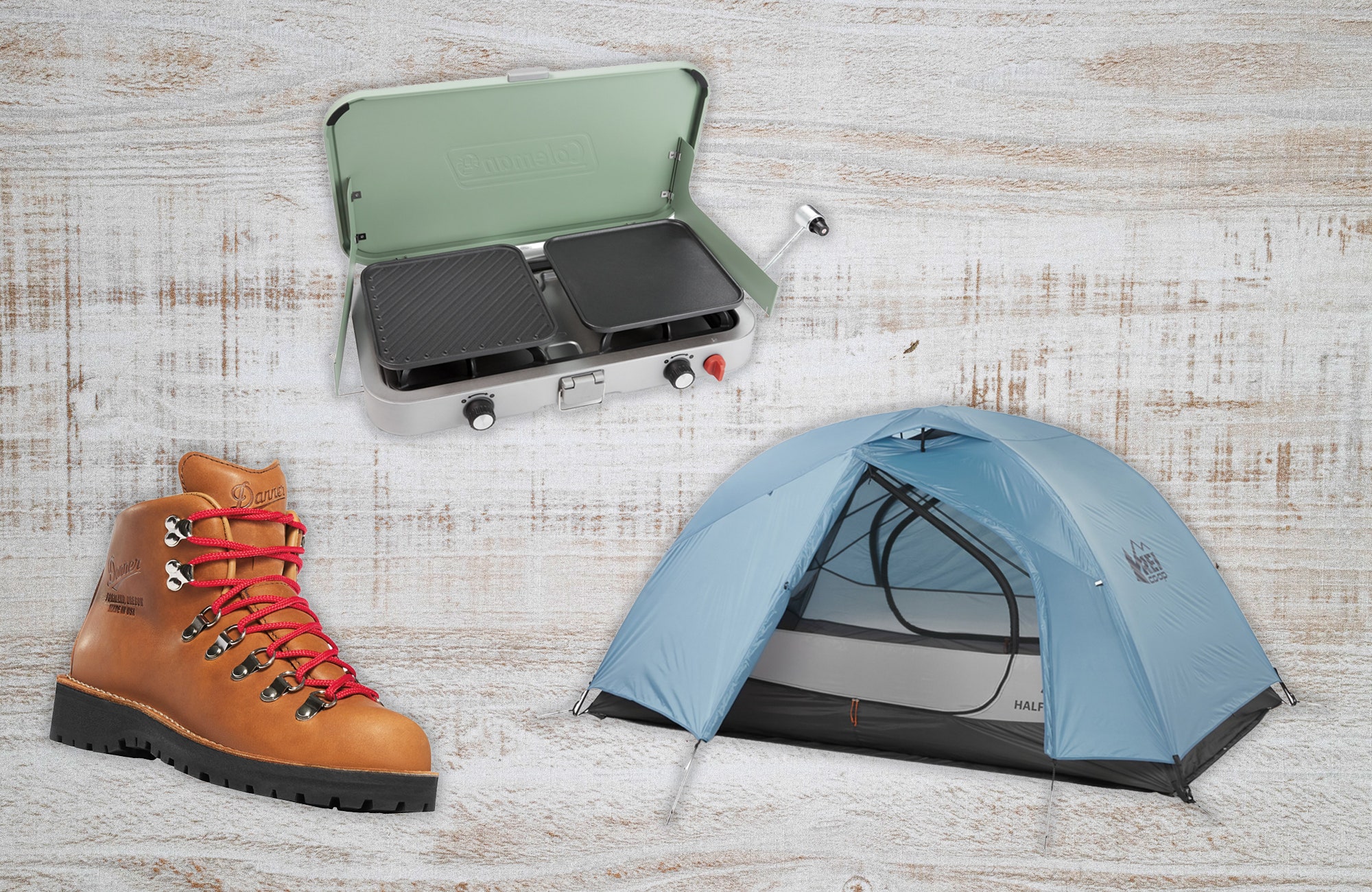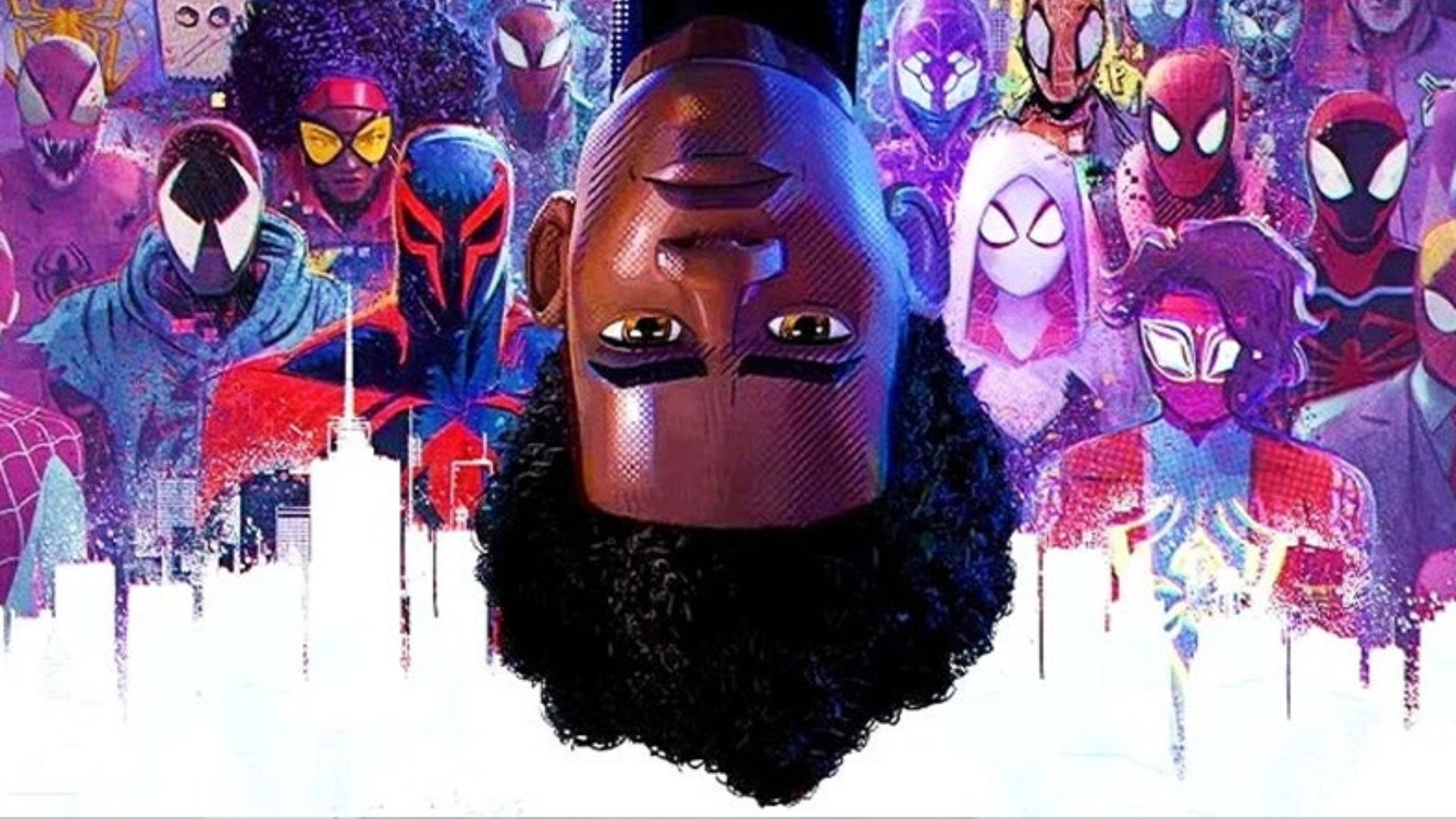Twenty years before it became a challenge to track down certain Mario toys in the form of amiibo, Nintendo made a Game Boy Advance game about the challenge of tracking down certain Mario toys in the form of wind-up Mini-Marios. That game was Mario vs. Donkey Kong, a puzzle-platformer that portrayed the popular plumber pursuing the barrel-heaving ape through a series of trap-filled levels, grabbing as many Mini-Mario toys as he could get his hands on along the way. Now the 2004 original has been remade for the Nintendo Switch, complete with a couple of new worlds, additional modes, and a significant visual makeover. It may still be fairly brief and light on challenge for the most part, but nonetheless I found retrieving the Mario Toy Company’s stolen stock against the pressure of a ticking clock to be a mostly engaging endeavour.
Yes, you read that right: in addition to being a plumber, a go-kart racer, an athlete across several different sports, and even a pill-slinging doctor, Mario is apparently also the head of his own toy company like some sort of Tonka Willy Wonka. As it did in the original, Mario vs. Donkey Kong’s story opens with the impish ape charging into Mario’s factory, scooping up all the Mini-Mario toys and shoving them into his sack like a smirking simian Santa Claus. The difference now is that these scenes are fully animated and packed with personality, unlike the mostly static slideshow-style sequences of before. It’s a bit of a shame, then, that there are only a handful of these mini-movies that bookend the six-hour adventure; it would have been nice to have perhaps seen a few more of them inserted in between worlds for flavour. Then again, despite its strong emphasis on puzzles this is still a 2D Mario platformer, so it’s not exactly against type for it to feature about as much plot development as a silent film.
Broadly speaking, the primitive visual design of the original hasn’t just aged poorly – it started out uglier than Waluigi’s smile even by 2004 standards thanks to environments that pulled from a fairly limited colour palette and characters so heavily pixelated it appeared they were trying to hide their identities as a result of crimes they’d committed against the Mushroom Kingdom. Thankfully, this new version of the 20-year-old portable puzzle-platformer puts the strain on your reflexes and brain rather than your eyes. Mario, Donkey Kong, and the various enemy types like flame-spitting Piranha Plants and clockwork Shy Guys are uniformly sharp and coated in a sheen of contemporary Nintendo charm, and the eight worlds on offer each provide a series of striking deathtrap dioramas – from the lush green canopies of Donkey Kong Jungle to the lethal lava pools of Fire Mountain.
Key to Success
This modern Mario vs. Donkey Kong might be styled up in a fresh pair of high-definition dungarees, but underneath the sharp new looks the heart of it remains unchanged. Mario’s moveset is identical to the original version – he’s still able to smoothly flip over into a handstand to both protect himself from falling projectiles with his feet and perform an athletic launch up to out-of-reach places, as well as pick up enemies and throw them at other foes or place them onto spikey surfaces in order to use their heads as mobile platforms. Given the absence of the word ‘Super’ in the title it’s no shock that there’s no sign of Fire Flowers or Super Stars, let alone the wackier pachyderm power-ups of Super Mario Bros. Wonder, but there are still some entertaining ways to topple the handful of enemies in each stage. In one level you might scamper across a row of dangled ropes knocking fruit that falls down and conks enemies on their noggins, while in another you might grab one of the hammers from the original Donkey Kong arcade game to play a momentary round of Whack-a-Mole with a row of levitating oil barrels.
The bulk of Mario vs. Donkey Kong’s bite-sized levels are each split into two rooms. In the first, Mario must collect a key and carry it to the level’s locked exit, which is easier said than done since he can’t climb ladders or perform any acrobatic moves while holding the key, and if he drops it for longer than 12 seconds at a time it teleports back to where he found it. In the second room, he needs to navigate a fresh set of obstacles in order to retrieve one of the stolen Mini-Mario toys that slipped out of Donkey Kong’s gorilla grip, which is typically a more straightforward assignment but can occasionally throw interesting wrinkles like rising lava to light a literal fire underneath you. Each world culminates in a slight variation on the same simple boss fight against Donkey Kong, but not before Mario turns from plumber to Pied Piper and you get to lead all the Mini-Marios you’ve previously collected to safety in some clever change-up challenges that are reminiscent of the classic Lemmings series.
Its overall degree of difficulty might be a far cry from that of Celeste or Super Meat Boy, but the fact that Mario can be felled by only one hit means there’s still a strong emphasis on precise platforming as you steer him around leaping lava sprites and under birds that drop deadly eggs from above. Reaching the goal of each stage doesn’t just rely on self-preservation, though, since most levels also require the careful manipulation of coloured switches that reveal hidden platforms or reverse the direction of conveyor belts, for example, and getting the sequence and timing right is a consistently fun task as you puzzle your way from one lively escape room to the next.
While Mario’s quest to reclaim the contents of his toy chest take him from the industrial factory floor to the Boo-haunted hallways of a spooky mansion, I found that the two new worlds created specifically for this remake were home to some of the most memorable levels in the whole adventure. Merry Mini-Land introduces nifty new elements like flower-powered fans that allow Mario and objects like explosive Bob-ombs to float across large gaps, as well as teleporter blocks that blink him from one corner of a stage to another. Meanwhile, Slippery Summit lives up to its name by coating the bulk of its platforms in ice, allowing you to use Mario’s momentum to slide through small holes in the terrain and turn fallen stalactites into steps. They’re both welcome additions to the 2004 game’s foundation and feel like clever new takes on the formula rather than simple rehashes of the existing ideas.
Easy Does It
Even with those added levels, completing Mario vs. Donkey Kong’s eight worlds for the first time still only takes a few hours, but you do unlock alternate ‘plus’ versions of those worlds – each consisting of six new levels and a slightly reworked boss fight – which took me another three hours or so to complete. Oddly enough I found – with rare exception – that this second set of levels was substantially easier to complete than the first, including the final boss fight, which made Mario vs. Donkey Kong’s overall difficulty feel a little front-loaded – like playing the front nine holes at Pebble Beach, and then the back nine at a shopping mall mini-golf course. This was true of the original version too, and I’m slightly disappointed that although Nintendo was happy to reshuffle the structure to accommodate the two new worlds, it didn’t also put some work into bending Mario vs. Donkey Kong’s difficulty curve into a gradual incline as opposed to a parabola.
That said, there is still a collection of Expert levels to unlock by earning gold stars throughout the main adventure. These noticeably more challenging stages have grown in number to 16, up from the original’s dozen, and are more trap-filled than the Billboard Hot 100 chart. Additionally, there’s the option to retry every level in the new Time Attack mode, which shaves a substantial amount of seconds off the clock and forces you to pinpoint the most efficient path through each obstacle-strewn stage. It’s nice to have these extra time trials, although I wish there’d been more incentive to complete them – perhaps if beating them unlocked extra character costumes or concept art, for example, instead of just a tiny gold medal displayed on the level select screen.
Although I welcome these harder challenges, the increased demands of both the Expert and Time Attack levels did unfortunately expose some of Mario vs. Donkey Kong’s minor control quirks. On a number of occasions Mario would stubbornly refuse to grab onto a ladder or a chain whether I was using the D-pad or the thumbstick, and at other times he would die if he landed on top of an enemy ever so slightly left or right of the middle. Nintendo’s platforming mechanics are generally as sharp as a bearhug from Bowser, so I was surprised to find these occasional sloppy edges – and I’ve felt less motivated to try and chase 100% completion of Mario vs. Donkey Kong as a result.
I have, however, had a good time replaying some of my favourite stages with my son in the new two-player co-op. Toad can team up with Mario at any point outside of the Time Attack modes, and although it’s fundamentally the same level layouts – the biggest change is that there are two keys to collect in each stage instead of one – it does create its own form of enjoyable collaboration and chaos that sets it apart from playing solo. However, it strikes me as being a little strange that the new casual difficulty setting, which gives you five invincibility bubbles per life, can’t be activated during co-op. So if you’re playing with a younger or more inexperienced partner, they’re forced to play in the classic difficulty where one hit kills and are therefore likely to quickly eat away at your shared stash of extra lives, putting a potential strain on the partnership. Thankfully the new chase-based 1-Up minigame that typically pops up once per world is a lot more fun than the slot machine-style game of chance in the original, so clawing back some of those quickly burnt lives is at least a more appealing undertaking than it was before.









